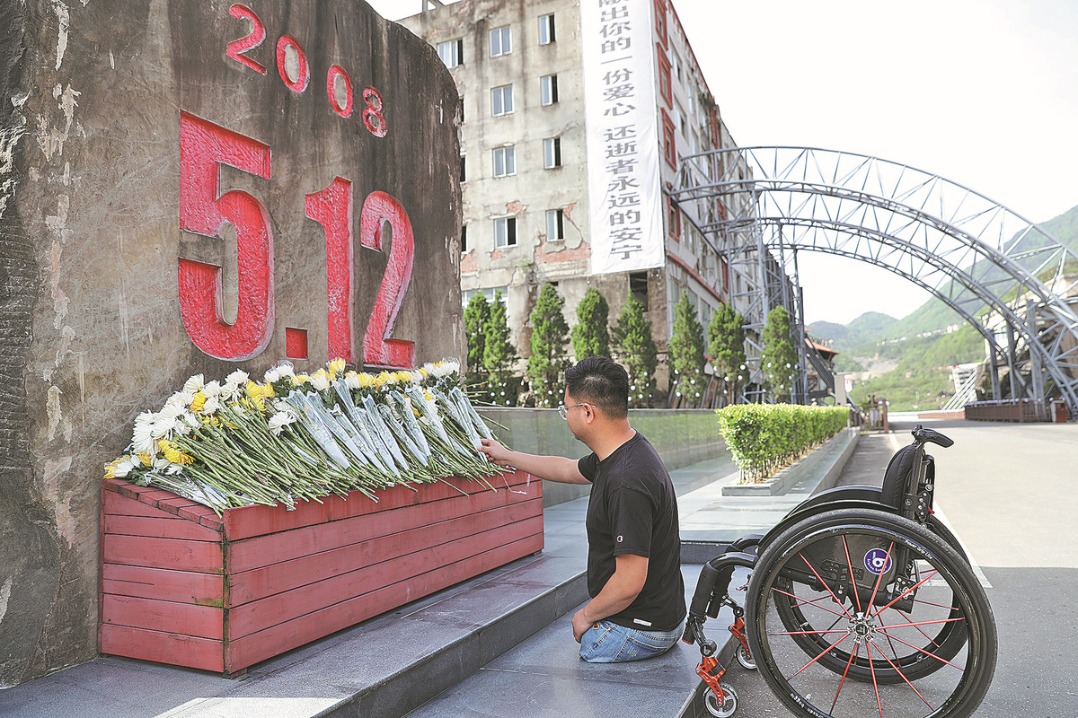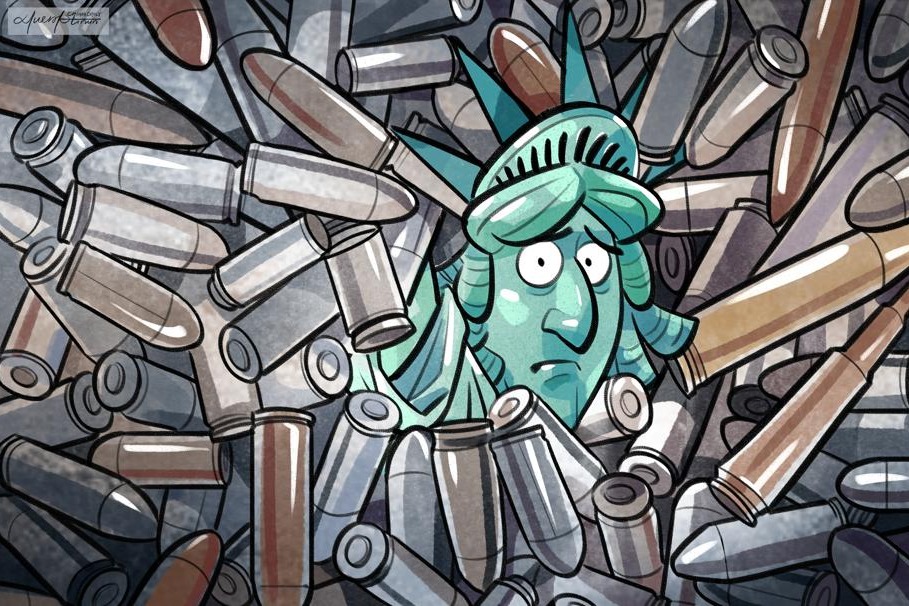Risk control key to safely deflate realty bubble


JIN DING/CHINA DAILY
The Chinese leadership, during the Political Bureau of the Communist Party of China Central Committee meeting on Monday, emphasized stabilizing the housing and stock markets while addressing key risks and external challenges — highlighting the critical role of real estate in securing economic recovery and resilience.
China's real estate market is undergoing a prolonged adjustment period. The government is focused on mitigating risks to prevent them from escalating into systemic economic threats. Stabilizing the real estate market involves balancing risk mitigation with demand stabilization to achieve a phased equilibrium in the real estate market.
The essence of real estate stabilization lies in effectively resolving accumulated market risks. Besides, a critical component of this stabilization is the successful transition to a new development model for the real estate sector, ensuring its sustainable growth.
The current policy signals indicate that the real estate market is transitioning from a "reduction" phase to a new stage characterized by accelerated price competition and market clearance. Since 2021, the market has experienced significant declines in funding and sales volumes, primarily due to the sharp reduction in speculative demand. However, price adjustments have been less pronounced.
For instance, real estate investment funding in China exceeded 20 trillion yuan ($2.75 trillion) in 2021, dropped by 5.2 trillion yuan in 2022, and further decreased by over 2 trillion yuan in 2023. This year, it is expected to fall below 10 trillion yuan, halving in just three years. Sales volumes have mirrored this decline, while investment levels and price adjustments have been more moderate. The market has squeezed out speculative demand, while the government aims to stabilize consumer demand.
To stimulate new housing demand, the central government has implemented financial policies such as interest rate cuts and reserve requirement reductions. Local governments have lowered payment ratios, abolished distinctions between ordinary and non-ordinary housing, and lifted purchase restrictions. These measures have returned housing policies to their most relaxed state, coupled with historically low interest rates.
However, is there a risk that these favorable conditions might attract buyers who lack repayment capacity or have poor credit, potentially leading to a subprime crisis similar to that in the United States? The lessons from the US subprime mortgage crisis are a stark reminder: future risks should not replace current ones. The core of real estate stabilization is the effective resolution and control of risks.
As the real estate market enters a new adjustment phase, it is crucial to continue addressing existing risks while preventing new ones. This requires a combination of rational consumer behavior, prudent policy guidance and strengthened market risk supervision.
First of all, new homebuyers must remain vigilant, adopt a strong risk awareness, and avoid purchasing with speculative intentions. Despite the lower down payments and minimal loan costs, real estate risks persist. The primary risk in China's real estate market is the "price bubble", which increases cost of purchasing. For example, if a house worth 1 million yuan, which is about five or six times of local urban residents' annual income, is currently priced at 2 million yuan. Despite its fall from the peak price of 2.5 million yuan, the potential purchasers still face risks of financial loss due to further price reduction.
What's more, government policy guidance should help buyers understand the real estate adjustment process and the government's phased regulatory objectives. China's real estate bubble has been building for nearly 20 years, accumulating significant risks. Stabilizing the market is no easy task. Implementing the "three-volume" policy — strictly controlling new construction, optimizing existing stock, and improving quality — is essential for effective stabilization. In 2023, the total planned investment in the housing market reached 100 trillion yuan, accelerating the oversupply situation in the housing market.
From a market clearance perspective, the second phase of real estate adjustment will feature price reductions and promotional sales, alongside large-scale reductions, optimization of existing stock, and quality improvements in new developments. Therefore, a long-term decline in housing prices is inevitable. Stabilization does not mean returning to a bubble-driven market with another round of price surges, which would only exacerbate risks.
And equally important, financial and regulatory authorities must rigorously monitor risks and enforce entry standards. Lifting purchase and price restrictions does not equate to neglecting market risk management. Financial and housing regulators must enhance oversight of subprime loans, clearly delineating prohibited subprime loan boundaries and strictly prohibiting their issuance. Additionally, real estate developers should include risk warnings — such as "the housing market has risks; buy with caution" — in their sales offices and advertisements.
The author is a professor at the department of economics of the Party School of the Communist Party of China Central Committee (the National Academy of Governance).
The views don't necessarily represent those of China Daily.
If you have a specific expertise, or would like to share your thought about our stories, then send us your writings at opinion@chinadaily.com.cn, and comment@chinadaily.com.cn.


































